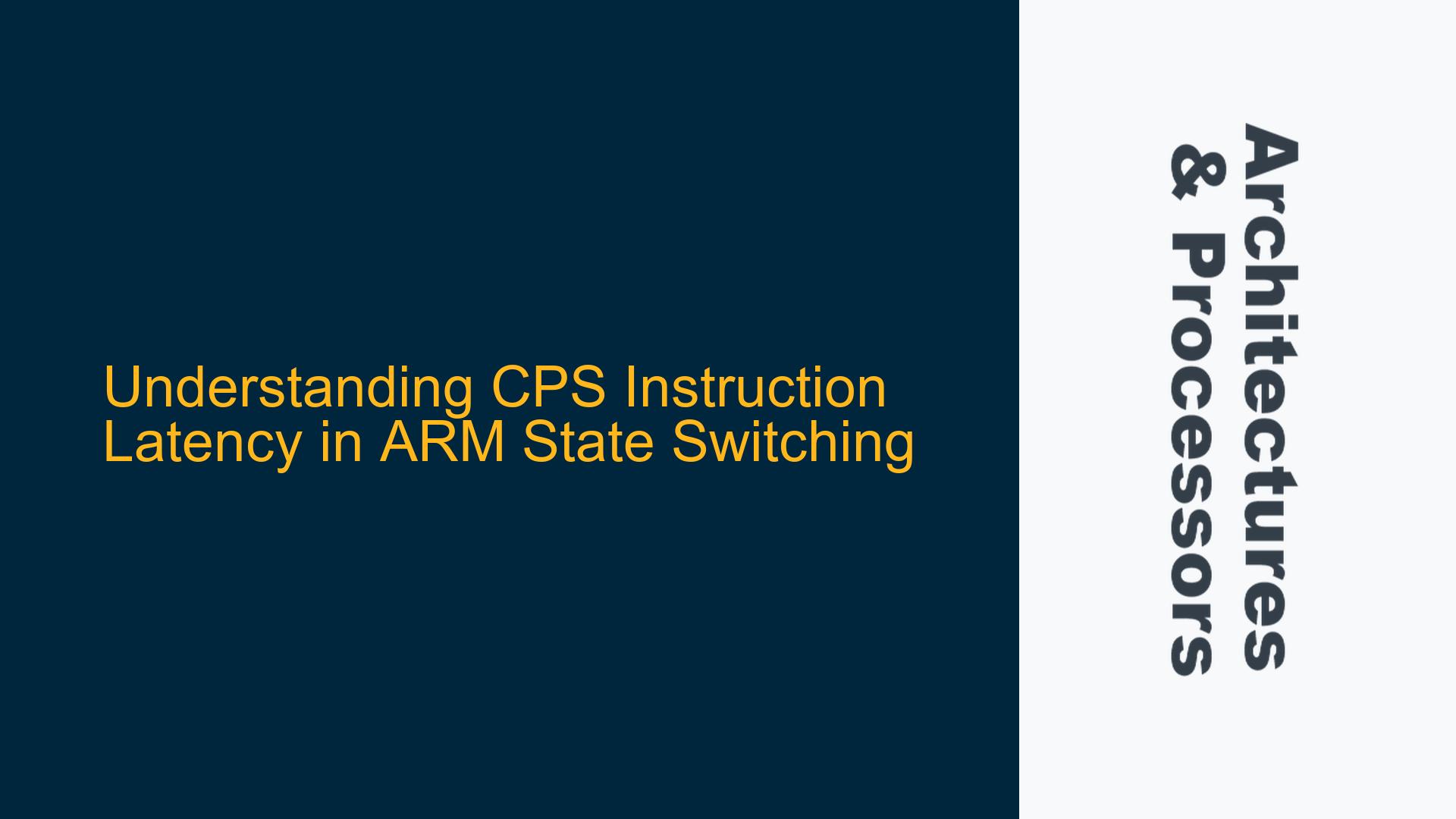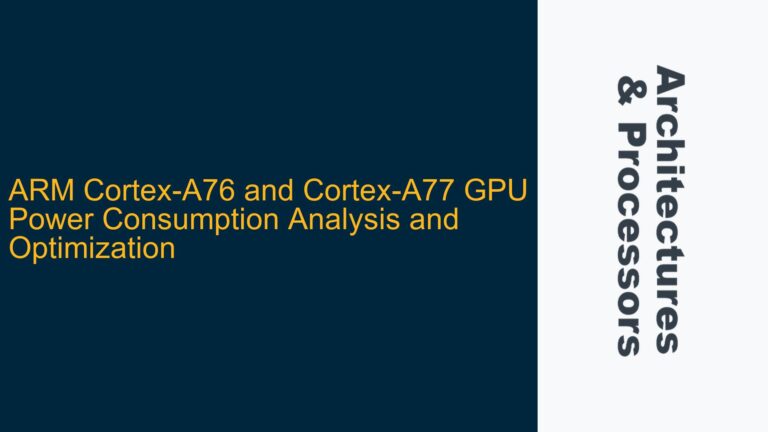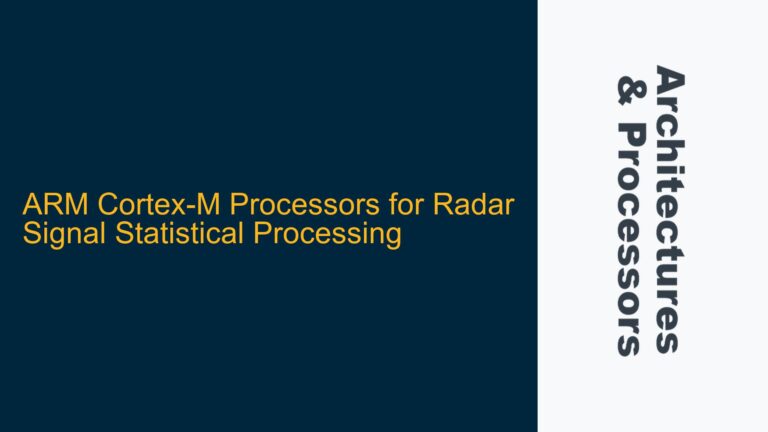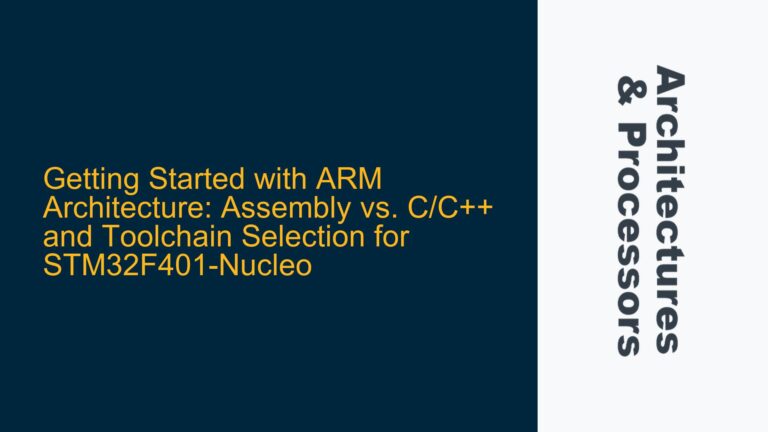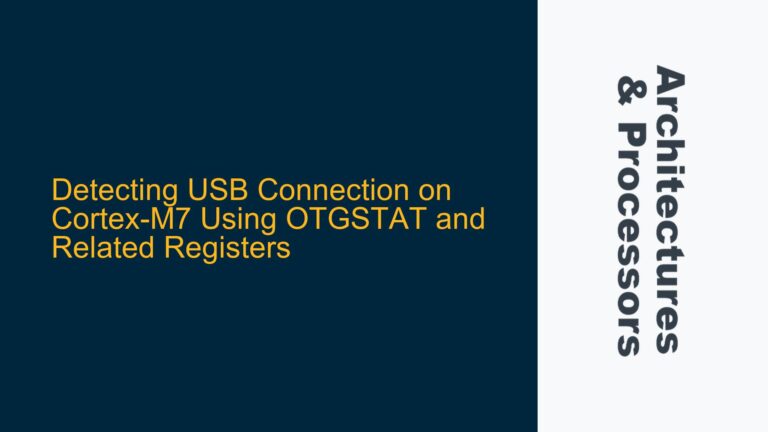ARM Cortex Processor State Switching with CPS Instruction
The CPS (Change Processor State) instruction in ARM architectures is a critical operation for switching between different processor states, such as changing privilege levels (e.g., PL1 to PL0) or modifying execution modes (e.g., between ARM and Thumb states). The latency of the CPS instruction—the time it takes to complete the state switch—is a key consideration for real-time systems, low-latency applications, and performance-critical firmware. This latency is influenced by several factors, including the specific ARM core, the current processor state, the target state, and the surrounding system architecture.
The CPS instruction operates by modifying the CPSR (Current Program Status Register), which controls the processor’s mode, interrupt enable flags, and other critical state information. When the CPS instruction is executed, the processor must perform a series of internal operations to ensure a consistent and valid state transition. These operations include updating the CPSR, flushing pipelines, and potentially invalidating caches or TLBs (Translation Lookaside Buffers) depending on the nature of the state change.
The latency of the CPS instruction is not explicitly documented in ARM manuals because it varies significantly across different processor implementations. For example, a Cortex-M4 microcontroller might exhibit different CPS latency compared to a Cortex-A53 application processor due to differences in pipeline depth, cache architecture, and power management features. Additionally, the latency can be affected by the presence of pending interrupts, debug events, or other system-level activities that might delay the completion of the state switch.
Factors Influencing CPS Instruction Latency
The latency of the CPS instruction is influenced by several architectural and system-level factors. Understanding these factors is essential for optimizing firmware and diagnosing performance bottlenecks in ARM-based systems.
Pipeline Depth and Stalling
ARM processors use pipelining to improve instruction throughput, but this can introduce latency when switching states. The CPS instruction typically causes a pipeline flush to ensure that no instructions from the previous state are executed in the new state. The depth of the pipeline directly impacts the number of cycles required for the flush. For example, a Cortex-M3 processor with a 3-stage pipeline will have a shorter flush latency compared to a Cortex-A15 with a 15-stage pipeline.
Cache and TLB Invalidation
State switches that involve changes to memory access permissions or address translation settings may require cache or TLB invalidation. For instance, switching from PL1 (privileged mode) to PL0 (user mode) might involve changes to memory protection regions, necessitating a TLB flush. The time required for these operations depends on the size and organization of the cache and TLB. A Cortex-A processor with a large L2 cache and multi-level TLB will experience higher latency compared to a Cortex-M processor with no cache or a simple MPU (Memory Protection Unit).
Interrupt and Exception Handling
If the CPS instruction is executed while interrupts or exceptions are pending, the processor may need to handle these events before completing the state switch. This can introduce additional latency, especially in systems with nested interrupt handling or complex exception prioritization schemes. For example, a Cortex-R series processor designed for real-time applications might prioritize interrupt handling over state switching, leading to variable CPS latency.
Power Management Features
Modern ARM processors often include advanced power management features such as clock gating, power domains, and dynamic voltage and frequency scaling (DVFS). These features can impact CPS latency by introducing delays when waking up power domains or adjusting clock frequencies. For instance, a Cortex-A processor in a low-power state might take additional cycles to resume full-speed operation before executing the CPS instruction.
Microarchitectural Optimizations
Different ARM cores implement various microarchitectural optimizations that can affect CPS latency. For example, out-of-order execution cores like the Cortex-A77 might reorder instructions around the CPS operation, potentially reducing or increasing latency depending on the surrounding code. Similarly, speculative execution features might introduce additional cycles for branch prediction and recovery during state switches.
Measuring and Optimizing CPS Instruction Latency
To accurately measure and optimize the latency of the CPS instruction, developers must consider both hardware and software factors. The following steps provide a systematic approach to diagnosing and addressing CPS latency issues in ARM-based systems.
Profiling CPS Latency with Cycle Counters
ARM processors typically include cycle counters, such as the DWT (Data Watchpoint and Trace) unit in Cortex-M cores or the PMU (Performance Monitoring Unit) in Cortex-A cores. These counters can be used to measure the exact number of cycles taken by the CPS instruction. To profile CPS latency, developers can use the following approach:
- Enable the cycle counter and reset its value.
- Execute the CPS instruction.
- Read the cycle counter immediately after the CPS instruction completes.
- Repeat the measurement multiple times to account for variability.
For example, on a Cortex-M4 processor, the DWT_CYCCNT register can be used to measure CPS latency as follows:
DWT->CYCCNT = 0; // Reset cycle counter
__asm volatile ("CPSID i"); // Example CPS instruction
uint32_t cycles = DWT->CYCCNT; // Read cycle count
Minimizing Pipeline Flush Overhead
To reduce the impact of pipeline flushes during CPS execution, developers can optimize the surrounding code to minimize dependencies and maximize instruction-level parallelism. For example, placing the CPS instruction in a sequence of independent instructions can help the processor overlap execution and reduce overall latency. Additionally, avoiding branch instructions immediately before or after the CPS instruction can prevent pipeline stalls caused by misprediction.
Managing Cache and TLB Effects
When CPS latency is dominated by cache or TLB invalidation, developers can take steps to minimize these effects. For example, grouping state switches to reduce the frequency of cache and TLB flushes can improve performance. In systems with an MMU (Memory Management Unit), using shared memory regions with consistent permissions across privilege levels can avoid the need for TLB invalidations during state switches.
Handling Interrupts and Exceptions
To mitigate the impact of interrupts and exceptions on CPS latency, developers can ensure that critical sections of code are executed with interrupts disabled. For example, using the CPSID instruction to disable interrupts before performing a state switch can prevent interrupt handling from delaying the CPS operation. However, this approach must be used judiciously to avoid increasing interrupt latency in real-time systems.
Leveraging Power Management Features
When CPS latency is affected by power management features, developers can optimize power state transitions to reduce delays. For example, configuring the processor to avoid deep low-power states during performance-critical tasks can minimize the time required to resume full-speed operation. Additionally, using DVFS to maintain a stable clock frequency during state switches can reduce variability in CPS latency.
Microarchitectural Tuning
For advanced optimization, developers can leverage microarchitectural features to reduce CPS latency. For example, on out-of-order cores, ensuring that the CPS instruction is not surrounded by dependent instructions can allow the processor to reorder execution and hide latency. Similarly, using speculative execution features to prefetch instructions for the new state can reduce the effective latency of the CPS operation.
Example: Optimizing CPS Latency on Cortex-M4
Consider a Cortex-M4 microcontroller where CPS latency is critical for a real-time control application. The following steps illustrate how to measure and optimize CPS latency in this context:
- Measure baseline CPS latency using the DWT cycle counter.
- Identify the primary source of latency (e.g., pipeline flush, cache invalidation).
- Optimize the surrounding code to minimize pipeline stalls and cache effects.
- Disable interrupts during critical state switches to prevent delays.
- Profile the optimized code to verify reduced CPS latency.
By following these steps, developers can achieve significant improvements in CPS latency, enhancing the performance and responsiveness of their ARM-based systems.
Conclusion
The latency of the CPS instruction in ARM processors is a complex and multifaceted issue that depends on a wide range of architectural and system-level factors. By understanding these factors and applying systematic optimization techniques, developers can effectively measure and reduce CPS latency, ensuring optimal performance for their applications. Whether working with a Cortex-M microcontroller or a Cortex-A application processor, the principles outlined in this guide provide a solid foundation for addressing CPS-related performance challenges.
